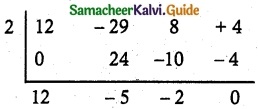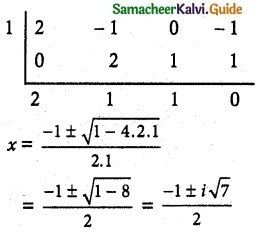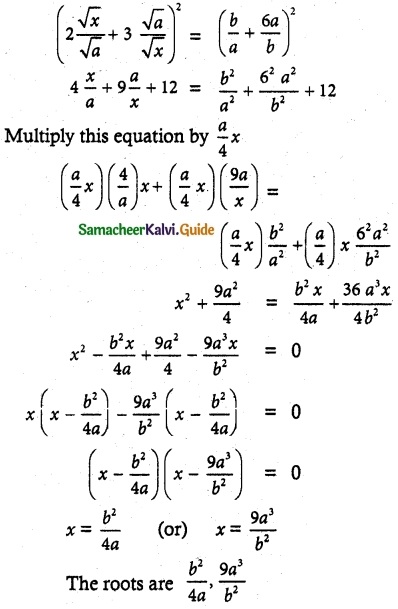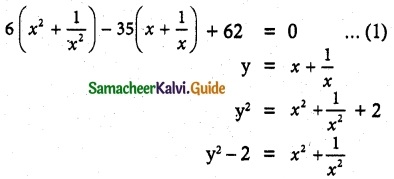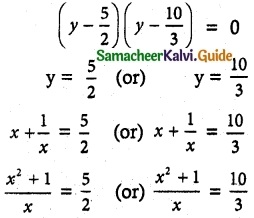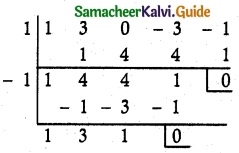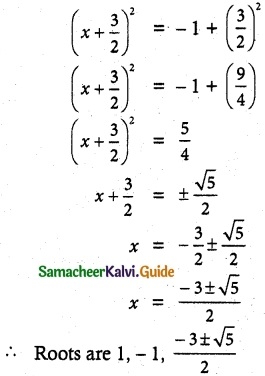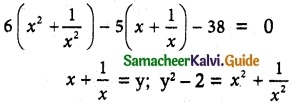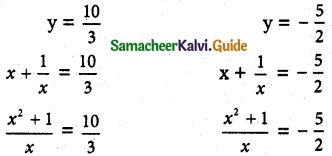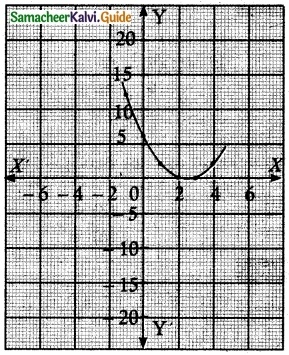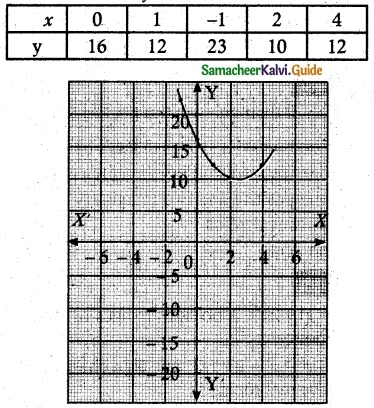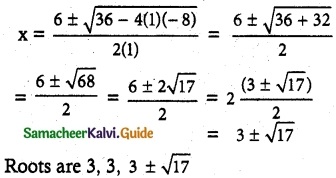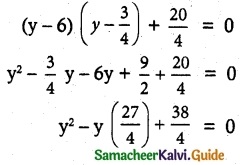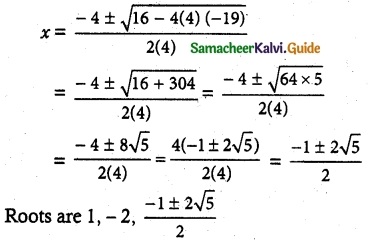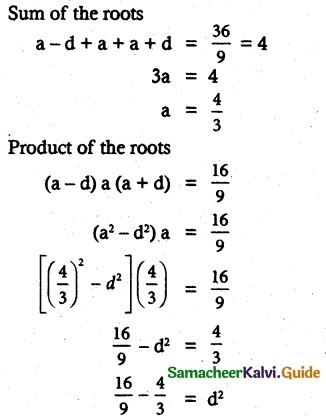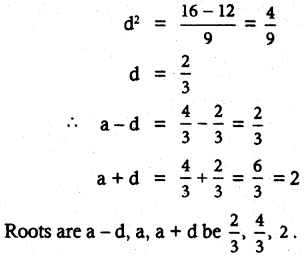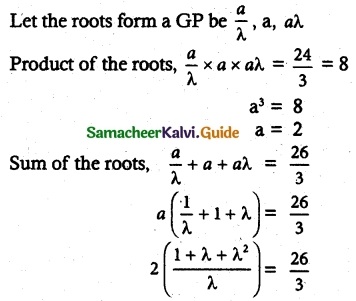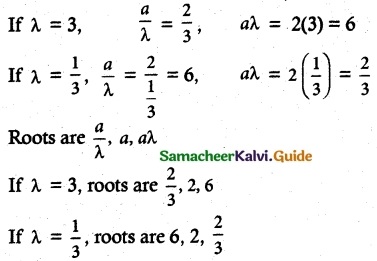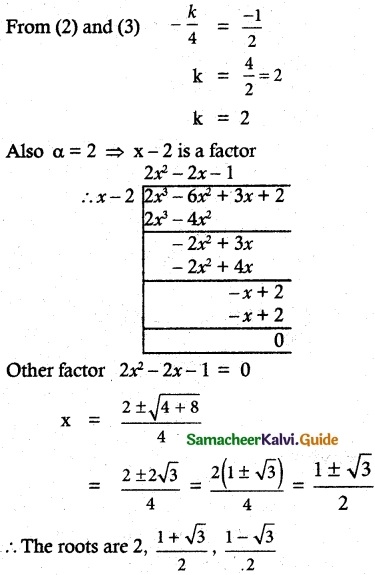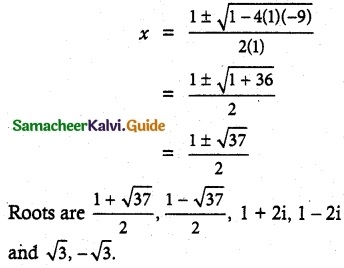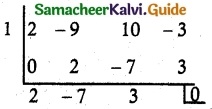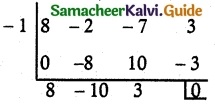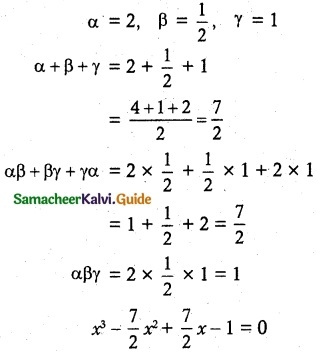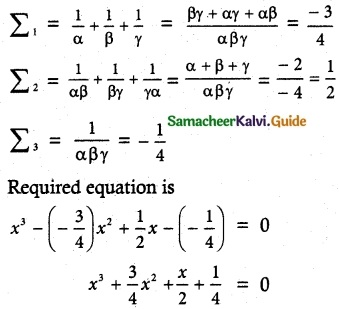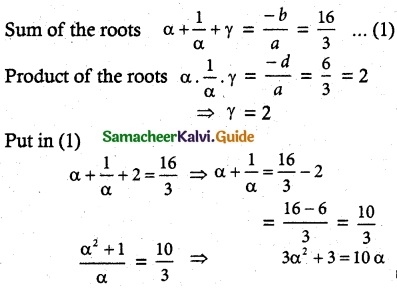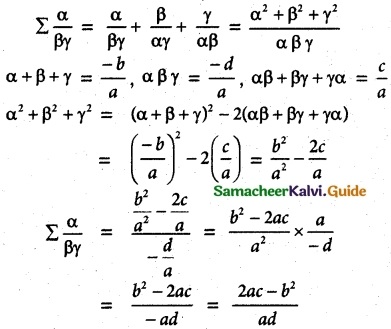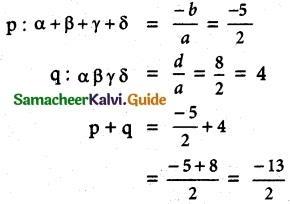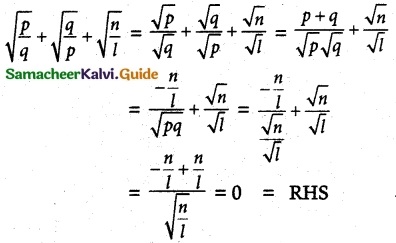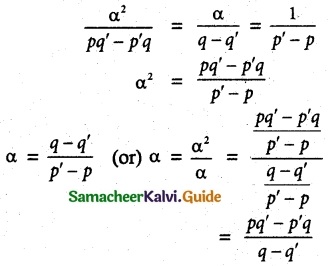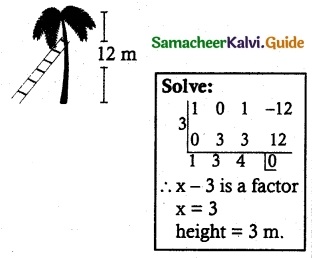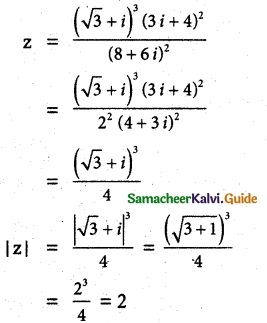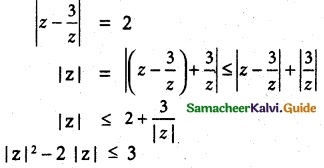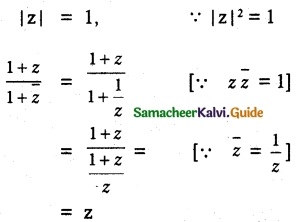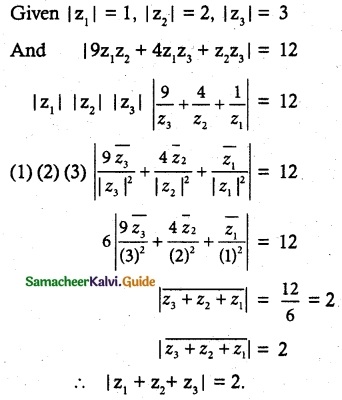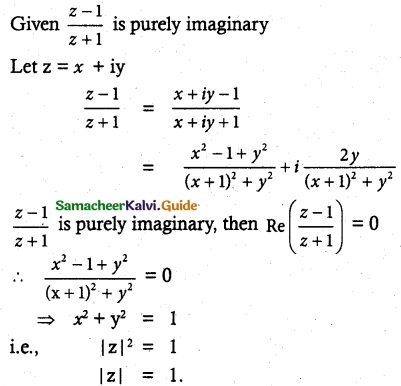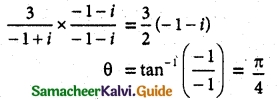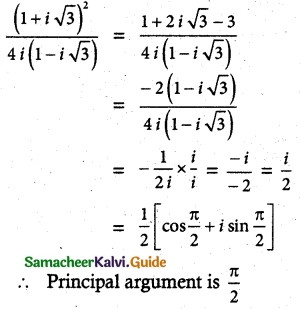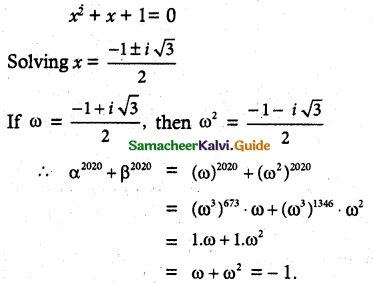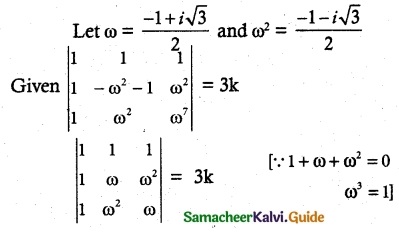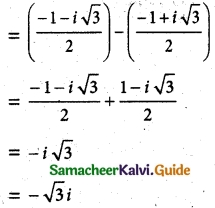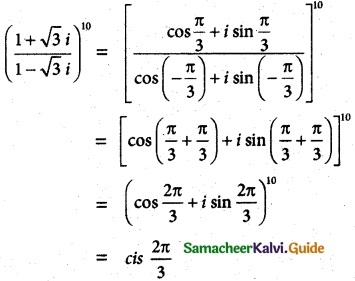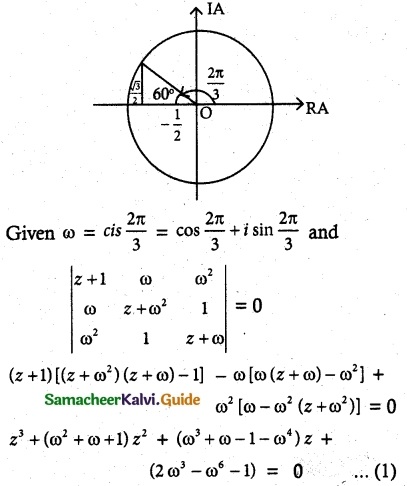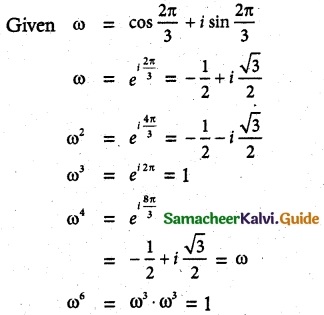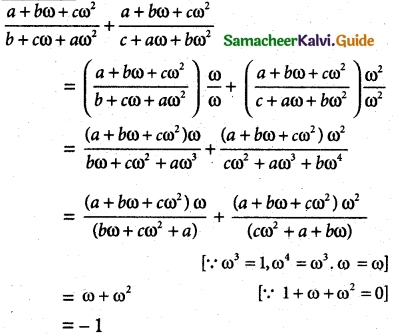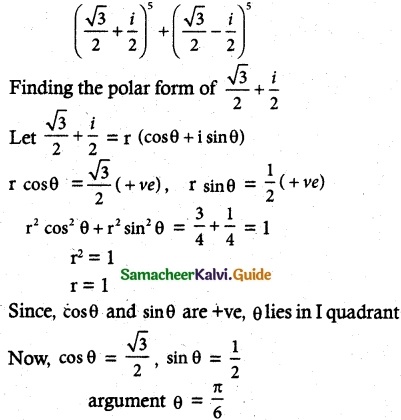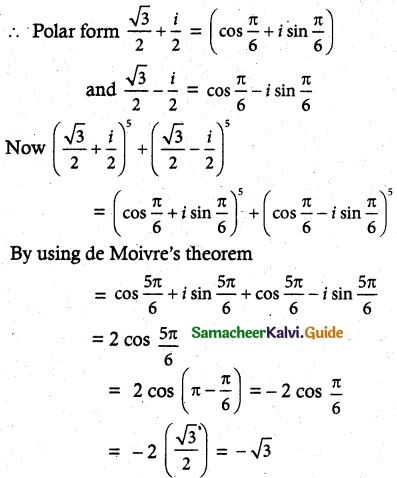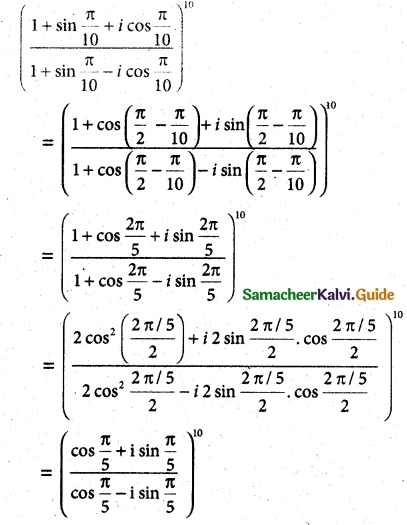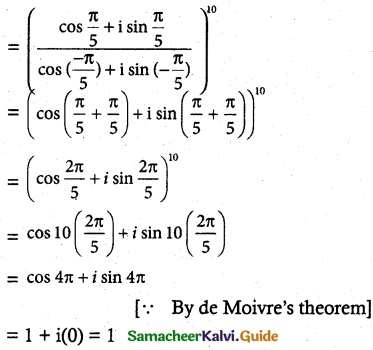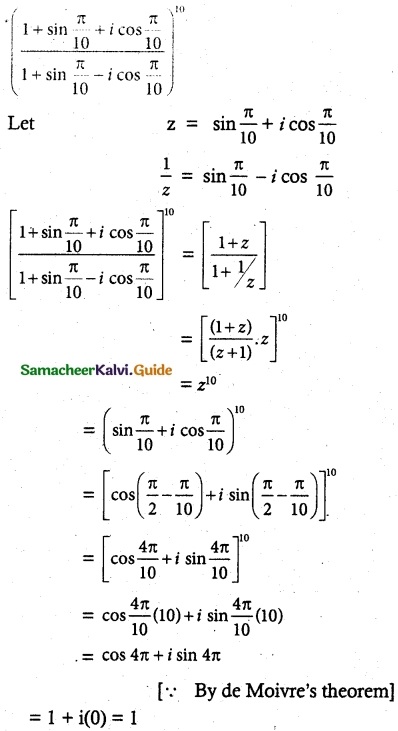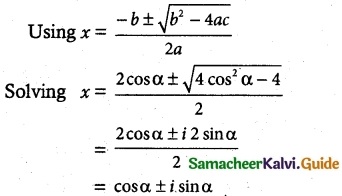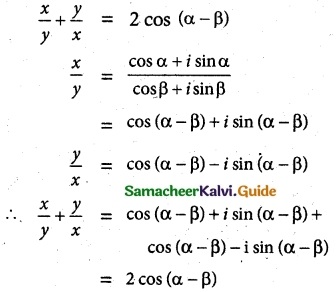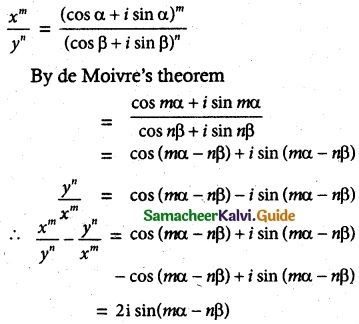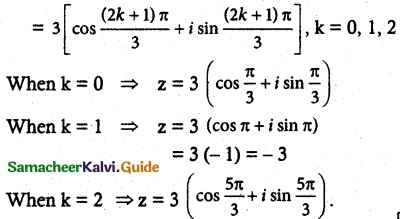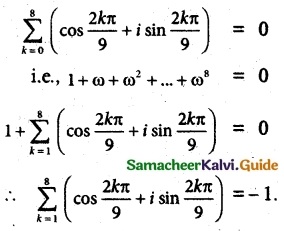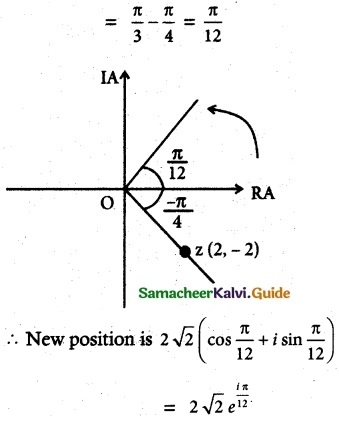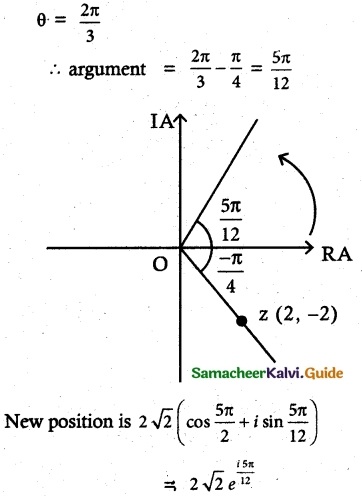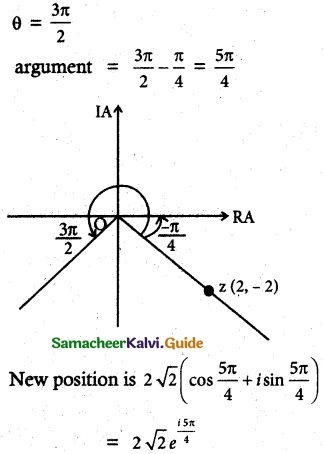Tamilnadu State Board New Syllabus Samacheer Kalvi 12th Maths Guide Pdf Chapter 3 Theory of Equations Ex 3.7 Textbook Questions and Answers, Notes.
Tamilnadu Samacheer Kalvi 12th Maths Solutions Chapter 3 Theory of Equations Ex 3.7
Choose the most suitable answer.
Question 1.
A zero of x³ + 64 is:
(a) 0
(b) 4
(c) 4i
(d) -4
Solution:
(d) -4
Hint:
x³ = -64
x³ = -4 × -4 × -4 = (-4)³
x = -4
Question 2.
If f and g are polynomials of degrees m and n respectively, and if h(x) = (f o g) (x), then the degree of h is:
(a) mn
(b) m + n
(c) mn
(d) nm
Solution:
(a) mn
Hint:
Let f(x) = xm and g(x) = xn
degree = m, degree = n
(f o g) (x) = f(g(x)) = f(xn) = (xn)m =xmn
degree = mn
![]()
Question 3.
A polynomial equation in x of degree n always has:
(a) n distinct roots
(b) n real roots
(c) n imaginary roots
(d) at most one root.
Solution:
(a) n distinct roots
Question 4.
If α, β and γ are the roots of x³ + px² + qx + r, then Σ \(\frac{1}{α}\) is:
(a) –\(\frac{q}{r}\)
(b) –\(\frac{p}{r}\)
(c) \(\frac{q}{r}\)
(d) –\(\frac{q}{p}\)
Solution:
(a) –\(\frac{q}{r}\)
Hint:
x³ + px² + qx + r = 0
α, β, γ are the roots
α + β + γ = -p
αβ + βγ + γα = q
αβγ = -r
Σ \(\frac{1}{α}\) = \(\frac{1}{α}\) + \(\frac{1}{β}\) + \(\frac{1}{γ}\) = \(\frac{βγ+αβ+αγ}{αβγ}\) = –\(\frac{q}{r}\)
![]()
Question 5.
According to the rational root theorem, which number is not possible rational root of 4x7 + 2x7 – 10x³ – 5?
(a) -1
(b) \(\frac{5}{4}\)
(c) \(\frac{4}{5}\)
(d) 5
Solution:
(c) \(\frac{4}{5}\)
Hint:
By rational root of theorem,
\(\frac{p}{q}\) is a root of a polynomial a0 = -5, an = 4 and (4, -5) = 1, then p must divide 5 and q must divide 4.
Possible values of p are +1, -1, +5, -5
Possible values of q are +1, -1, 4, -4
∴ \(\frac{4}{5}\) is not possible rational roots.
![]()
Question 6.
The polynomial x³ – kx² + 9x has three real roots if and only if, k satisfies:
(a) |k | ≤ 6
(b) k = 0
(c) |k| > 6
(d) |k| ≥ 6
Solution:
(d) |k| ≥ 6
Hint:
Δ ≥ 0
k² – 4(1)(9) ≥ 0
k² ≥ 36
|k| ≥ 6
Question 7.
The number of real numbers in [0, 2π] satisfying sin4x – 2 sin²x + 1 is:
(a) 2
(b) 4
(c) 1
(d) ∞
Solution:
(a) 2
Hint:
sin4x – 2sin²x + 1 = 0
Put sin²x = t [t² – 2t + 1 = 0 ⇒ (t – 1)² = 0]
t = 1, t = 1
sin²x = 1
sin x = ± 1
∴ sin x = 1, sin x = -1
sin x = sin \(\frac{π}{2}\), sin x = sin (π + \(\frac{π}{2}\))
x = \(\frac{π}{2}\), x = \(\frac{3π}{2}\)
Number of real numbers in [0, 2, π] is 2.
![]()
Question 8.
If x³ + 12x² + 10ax + 1999 definitely has a positive root, if and only if:
(a) a ≥ 0
(b) a > 0
(c) a < 0
(d) a ≤ 0
Solution:
(c) a < 0
Hint:
∴ If a < 0, then only we can get one sign change.
Question 9.
The polynomial x³ + 2x + 3 has:
(a) one negative and two real roots
(b) one positive and two imaginary roots
(c) three real roots
(d) no solution
Solution:
(a) one negative and two real roots
Hint:
p(x) = x³ + 2x + 3, no sign changes ⇒ no positive real roots.
p(-x) = -x³ – 2x + 3, one sign changes ⇒ one negative real roots.
∴ It has 1 negative root and 2 imaginary roots.
![]()
Question 10.
The number of positive roots of the polynomials \(\sum_{r=0}^{n}\) nCr (-1)r xr is
(a) 0
(b) n
(c) <n
(d) r
Solution:
(b) n
Hint:
\(\sum_{r=0}^{n}\) nCr (-1)r xr = xn – nC1 xn-1 + nC2 xn-2 + …. + (-1)n
P(x) has n changes
∴ It has n positive changes
P(-x) has no changes
∴ no negative roots.
![]()
